Greeting everyone–YES! I am finally back from 27 days in the beautiful 4 corners are of the United States. Workshop locations included, The slot canyons, Vermilion cliffs of Norther Arizona, Monument Valley, including Hunt’s Mesa and Mystery Valley, Canyon de Chelley, as well as Arches & Canyonlands National Parks. I conducted 3 successful workshops and enjoyed every minute. We had rain, snow, sandstorms, wind and a few great days as well, but all of that weather made for some amazing photography. In the next few weeks, I’ll be posting some stories and photographs not only from me, but from some of our attendees as well from these workshops but from my Death Valley workshop, last February.. STAY TUNED!
I spent a day with fellow photographer ( and a great one at that!)Guy Tal who lives within Capital Reef NP. He has a new eBook coming, which I’ll be discussing here soon. Check out his work at www.guytal.com _______________________________________________
COMING WORKSHOPS:—-These are filling up quite nicely and rather quickly. If you are thinking about any please let me know and I may be able to provide more information. You can access my remaining 2011 schedule as well as lots of new listings for 2012 here 2011 https://www.jackgrahamphoto.com/2011-workshop-schedule
2012 https://www.jackgrahamphoto.com/2012-workshop-schedule
Some kind words from past attendees! https://www.jackgrahamphoto.com/referrals
DISCOUNT ON “ULTIMATE ICELAND 2012” —I have a few spots left for Iceland July 2012—register during May and receive a $300.00 discount!…….https://www.jackgrahamphoto.com/ultimate-iceland
_________________________________________________________________________________________________
……and don’t forget my PODCAST, along with Bob Kulon at www.18percentgraymatter.com . You can also subscribe via iTunes
______________________________________________________________________________________________________________
Also for you Columbia River Gorge Fans: I ran into Scott Cook, the Author of “Curious Gorge”.now in its 3rd edition.. a who, what and where guide to the Columbia River Gorge here in Oregon. Do yourself a favor and BUY IT. Its packed with information, not well known about some great locations. http://www.amazon.com/Curious-Gorge-Scott-Cook/dp/B000TXRYQ6/ref=sr_1_1?ie=UTF8&s=books&qid=1303853743&sr=8-1
__________________________________________
FEATURED ARTICLE——– –CONSIDERATIONS when PHOTOGRAPHING WATERFALLS and STREAMS
All articles and photographs are the property of Jack Graham/ J Graham/ photography.
All photographs are protected by U.S. copyright laws and are not to be downloaded or reproduced in any way
without the written permission of the photographer. 0905
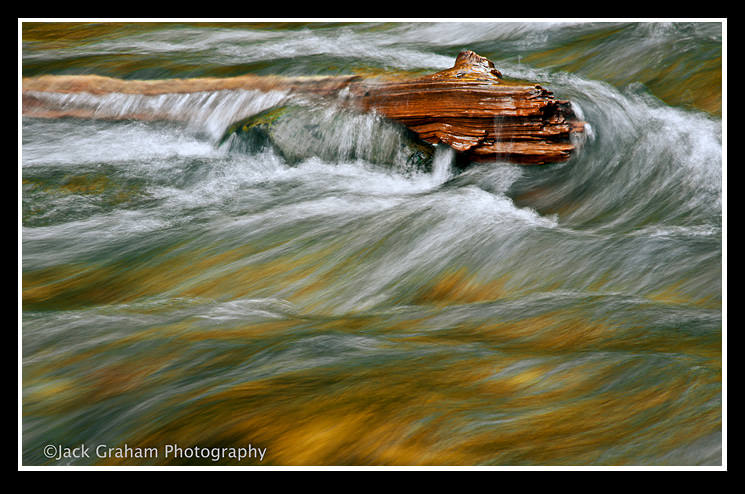 I live in the Pacific Northwest. What else says Pacific Northwest more than a waterfall. Spring here in the Pacific Northwest is a glorious time to take advantage of the hundreds of waterfalls within a short drive. The waterfall against a backdrop of lush greenery is one o my favorite subjects. Let’s discuss some of the challenges and suggestions that might help you in your waterfall photography. These are in order of how I think about them in the field. They are all equally important in making quality waterfall images.
I live in the Pacific Northwest. What else says Pacific Northwest more than a waterfall. Spring here in the Pacific Northwest is a glorious time to take advantage of the hundreds of waterfalls within a short drive. The waterfall against a backdrop of lush greenery is one o my favorite subjects. Let’s discuss some of the challenges and suggestions that might help you in your waterfall photography. These are in order of how I think about them in the field. They are all equally important in making quality waterfall images.
WATER EFFECTS: Silky or Natural?
This should be an easy decision. Slow shutter speeds for the silky effect and faster for less silky, or more action packed water. This is determined by the amount of water coming over the falls or over the rocks in a stream. If you are undecided, experiment and shoot both ways. Sometimes this is the best way to attack the situation and make your final decisions after the fact in front of your monitor. If you want to convey the overall power, force & majesty of a big waterfall, I usually try to use a fast shutter speed. The converse is true for smaller falls and streams.
Adjusting shutter speeds is your call. If you want the silky effect (my preference) use slower shutter speeds. If you want moving water to look like it really does, then use a fast speed. Here is a chart that I refer to for the effect that I desire.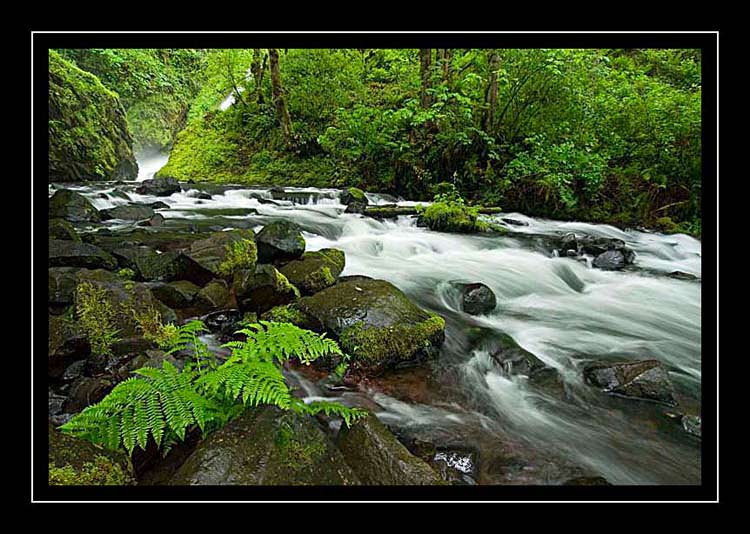
Natural Blurred Silky
LARGE WATERFALLS /CASCADING WATER: 1/500sec 1/125sec 1-1/2 sec
MEDIUM WATERFALLS /CASCADING WATER: 1/250sec 1/60 sec 1/2 sec
SMALL WATERFALLS /CASCADING WATER: 1/125sec 1/15 sec 1 sec
MOVING STREAMS: 1/60sec 1/8-1/4sec 2-4 sec
COMPOSITION:
As in all other facets of nature photography, composition is a primary concern when making a pleasing image. When photographing waterfalls & streams, I always ask myself:
1) How do I want to portray this waterfall or stream?
2) How can I use the surrounding environment to support the stream or waterfall..
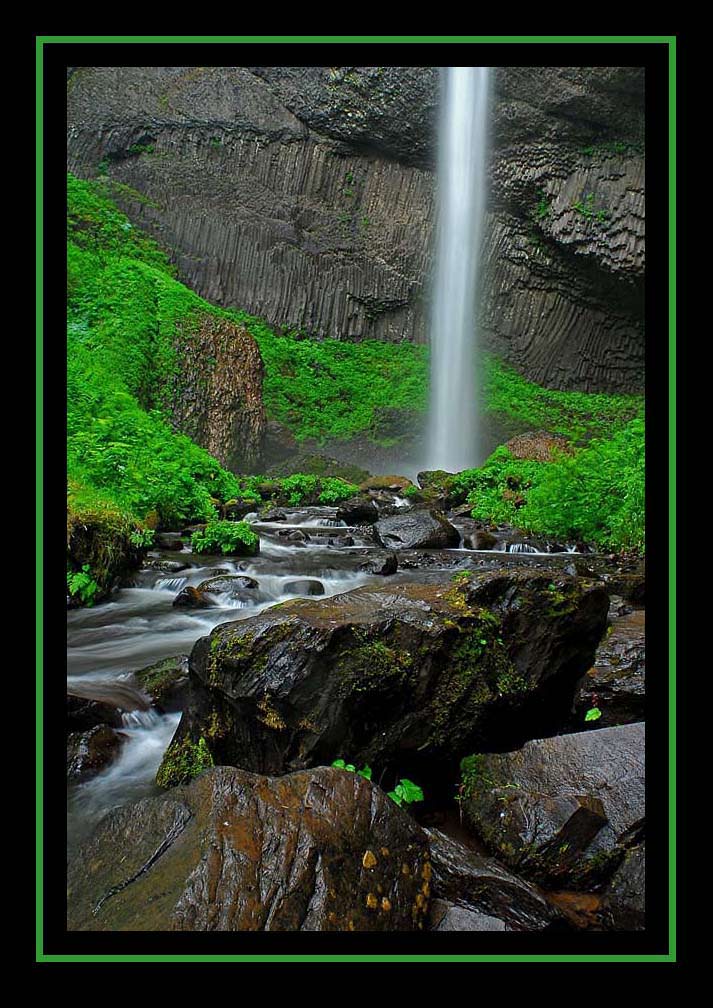 As in landscape photography, a strong foreground serves to anchor the image and make the waterfall stand out. Rocks with perhaps a stream running over and around them may serve to anchor the image and make the waterfall stand out. There might be some wildflowers as well or if you really get lucky rainbow created by the waterfall if the light is right. The surroundings of the waterfall often give the viewer an idea on where the waterfall is located. In most cases the surroundings offer lush green vegetation. Don’t discount the surroundings and get overwhelmed by the waterfall. Using all the good composition techniques that we all strive for in our photography is primary in waterfall photography as well
As in landscape photography, a strong foreground serves to anchor the image and make the waterfall stand out. Rocks with perhaps a stream running over and around them may serve to anchor the image and make the waterfall stand out. There might be some wildflowers as well or if you really get lucky rainbow created by the waterfall if the light is right. The surroundings of the waterfall often give the viewer an idea on where the waterfall is located. In most cases the surroundings offer lush green vegetation. Don’t discount the surroundings and get overwhelmed by the waterfall. Using all the good composition techniques that we all strive for in our photography is primary in waterfall photography as well
Decide weather you want to shoot the waterfall as a vertical or horizontal image. Like other landscape photography, I recommend making the shot both ways and deciding which one you like when you get home in front of your monitor. (TIP: Horizontal & vertical images are used for different applications… its good to have each in your files.)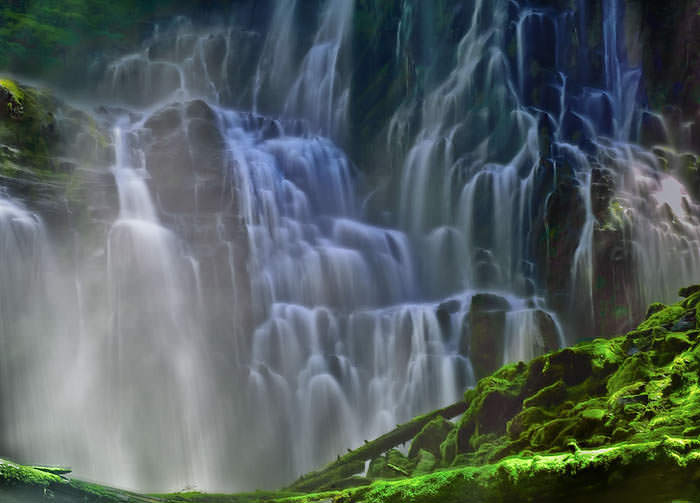
a horizontal view of Proxy Falls!!
Don’t discount the surroundings and get overwhelmed by the waterfall! Using all the good composition techniques that we all strive for in normal photography is primary in waterfall photography as well.
LIGHTING & EXPOSURE:
An important facet of waterfall or stream photography is lighting and exposure. Typically, ideal conditions are cloudy, misty days when the contrast is at a minimum. Many waterfalls are located in gorges and are in good light during sunny days, but not always. Depending on the available light conditions, matrix, evaluative (or automatic) metering is perfectly good way to photograph streams and waterfalls.
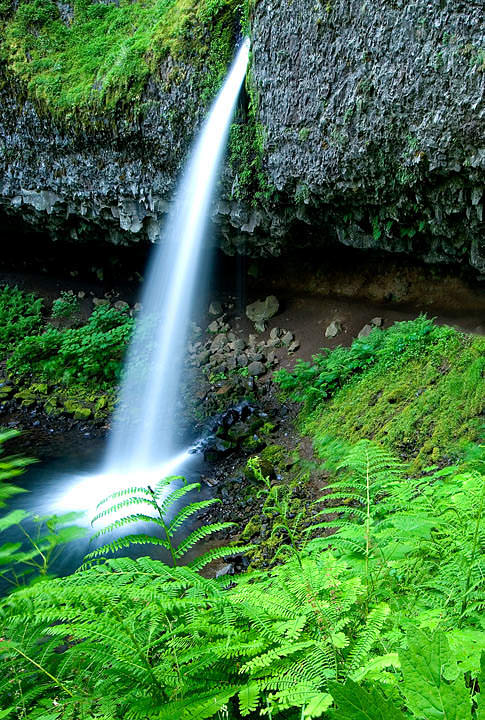 However often times, light conditions and the volume of water coming over the falls or on the stream can confuse even the best meters in today’s DSLR’s. Look at your histogram. Do you see blown out areas of the waterfall? Are the surrounding areas of the image too dark? If so, you may need to manually meter the scene. Spot meter a medium tone and adjust your compensation + or – depending on the scene.
However often times, light conditions and the volume of water coming over the falls or on the stream can confuse even the best meters in today’s DSLR’s. Look at your histogram. Do you see blown out areas of the waterfall? Are the surrounding areas of the image too dark? If so, you may need to manually meter the scene. Spot meter a medium tone and adjust your compensation + or – depending on the scene.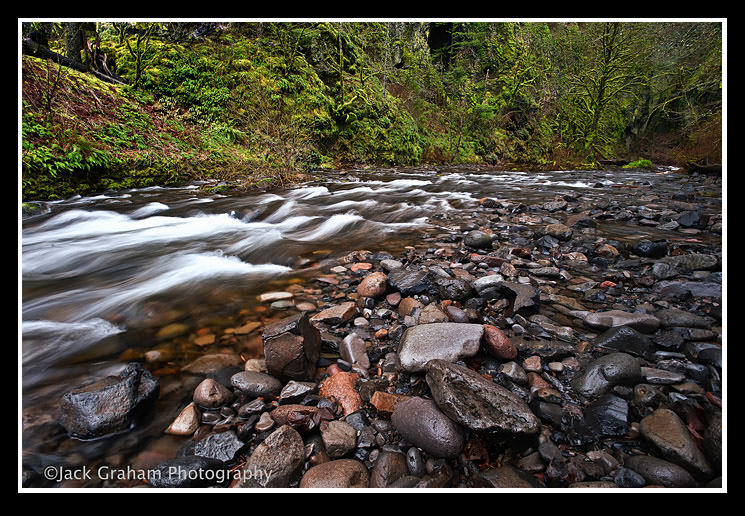
When shooting, I advise you to shoot in the RAW format. You can sometimes save images when shot RAW vs. JPEG in the post processing. It is sometimes possible to deal with some over blown highlights in the RAW format, usually never in JPEG.
Wet rocks also work a lot better than dry rocks–get there in the rain!
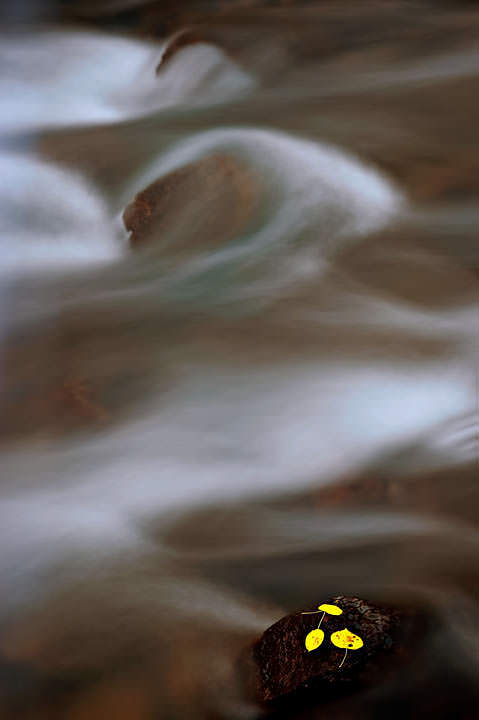 TIP: Try the Singh Ray 8 stop ND filiter special affects…http://www.singh-ray.com/varind.html
TIP: Try the Singh Ray 8 stop ND filiter special affects…http://www.singh-ray.com/varind.html 
Other important considerations:
1) Do I need to mention tripods? I hope not. Photographing at slow shutter speeds just does not work without tripods… period !
2) Just as in other applications use the slowest ISO as possible. The slower the ISO, the less grain.
3) To attain a less silky effect on the water but want to retain your aperture of choice, you can increase the ISO to increase shutter speed. Experiment. Different shutter speeds will create different effects on the water.
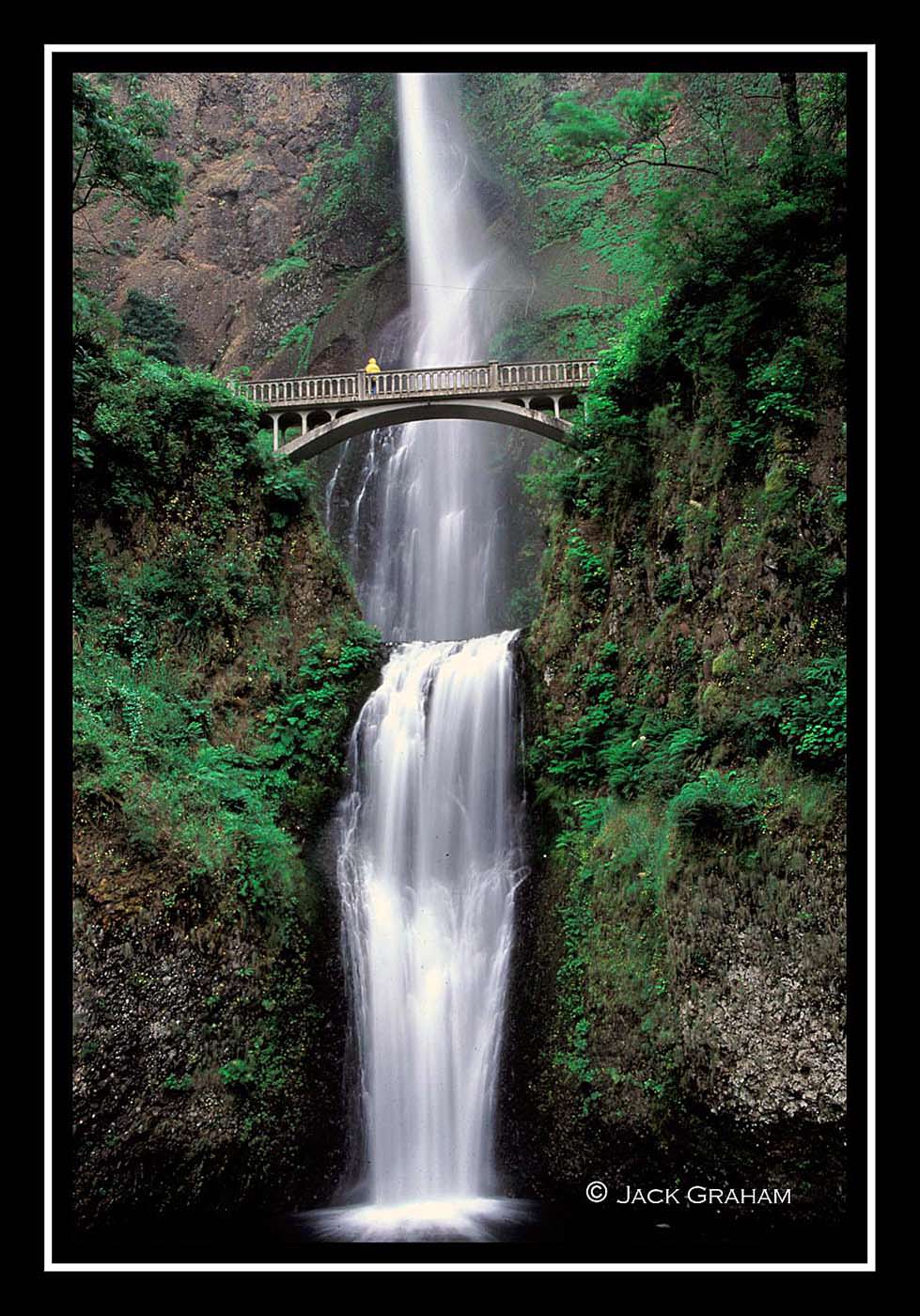 4) Use people or objects to add a sense of scale, especially with waterfalls.(See image on left)
4) Use people or objects to add a sense of scale, especially with waterfalls.(See image on left)
5) The polarizing filter is a MUST in order to reduce the glare on reflective surfaces. This filter will remove the glare also bring out the colors of the surrounding area making for stronger images. I use a polarizer almost all of the time when shooting waterfalls. When photographing intimate images in streams, such as water flowing swiftly over rocks, I rarely use a polarizer. Here I want the colors and textures created by the light and what is under the water to come through and not be diminished in any way… but that’s a discussion for another time. ( TIP: Not all polarizer’s are created equal. Why would you put a bad polarizer on a great expensive lens?
6) Depending on the light and elevation UV filters cal play a role in helping bring out colorations. These are also useful in keeping your expensive lenses fry, especially if the lenses are not sealed, (TIP: Never stack filters. This can produce lens flare. )
7) Carry protective gear for your camera. More often than not, waterfalls are going to get you and your gear wet in order to get the best image. I carry large hefty bags( 2-3 gallon size) to cover my gear.
8) I use a chamois to remove water from my lens, not a microfiber cloth. My experience with microfiber cloths is that they just move water around. A chamois will pull the water into away from the lens.
9)Get out there in bad weather.Look for the image less photographed like this one of Multnomah Falls incased in ice.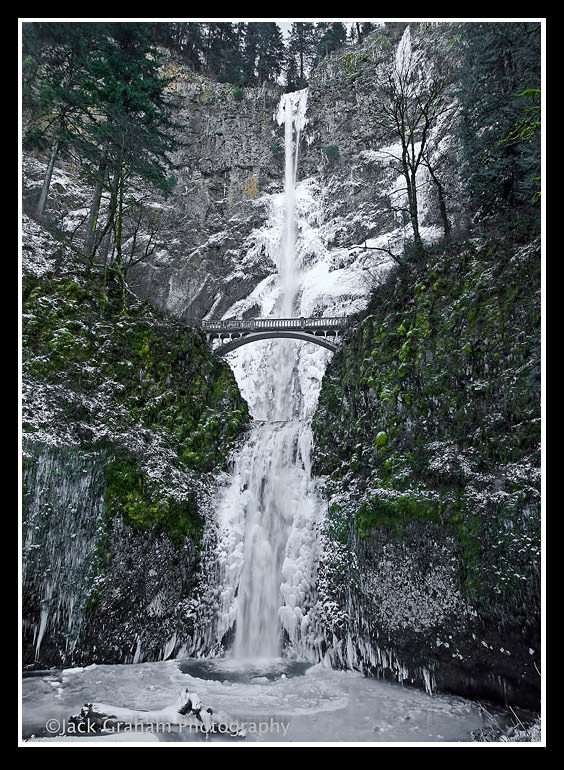
10) Be careful, not all cameras and lenses are sealed to avoid moisture. Moisture can quickly render some DSLR’s DOA!
Get out and have fun
2GREAT RESOURCES FOR WATERFALLS IN THE PACIFIC NORTHWEST are :
1) BOOK: A Waterfall Lover’s Guide to the Pacific Northwest and
2) WEBSITE: http://www.waterfallsnorthwest.com/
All articles and photographs are the property of Jack Graham/ J Graham/ photography.
All photographs are protected by U.S. copyright laws and are not to be downloaded or reproduced in any way
without the written permission of the photographer. 0905
_____________________________
COMING IN MAY FOR THOSE OF YOU IN THE PACIFIC NORTHWEST AREA:
My good friend Darrell Gulin is coming to the Portland Area. Darrell will be giving a talk on May 14th. Both Darrell and I will be conducting 2 workshops at the Tualatin River NWR on the follow inf day (Sunday). … one in the AM & one during the PM. Below is the press release. I hope to see you there!
Canon Explorer of Light, Darrell Gulin, past president of the North American Nature Photography Association (NANPA) and accomplished nature and wildlife photographer from Seattle will be the featured speaker at an evening event, May 14, 2011 as part of a three day Bird Festival sponsored by the Friends of Tualatin River National Wildlife Refuge. Darrell will be speaking at the Laurel Ridge Middle School Auditorium, 21416 SW Copper Tr., Sherwood, OR 97140. Admission is free but registration through the web site, www.prophotosupply.com/p-events.htm#gulin is encouraged. More details about the Festival are available at tualatinriverbirdfestival.org


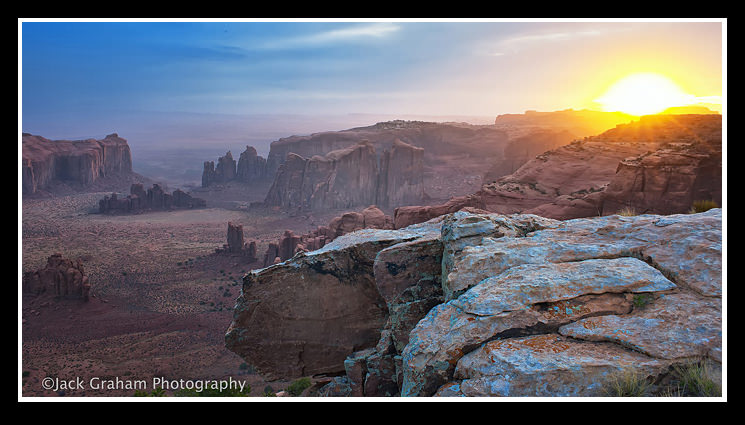
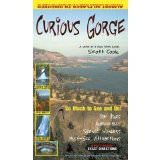
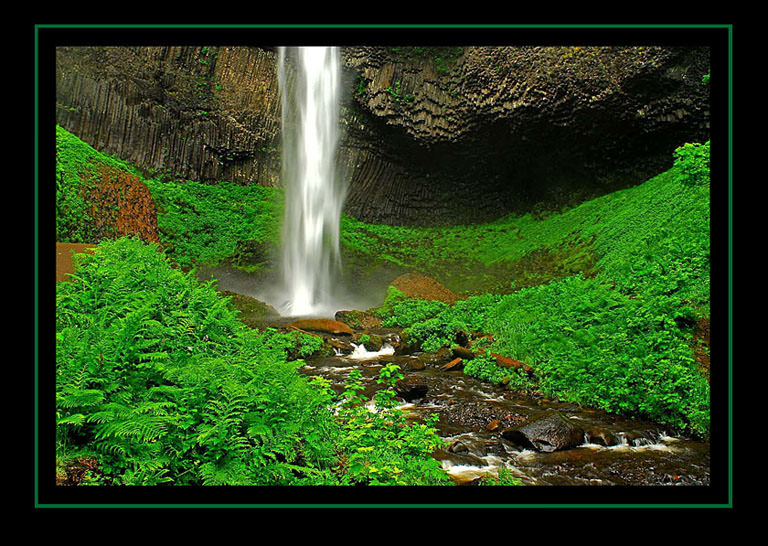

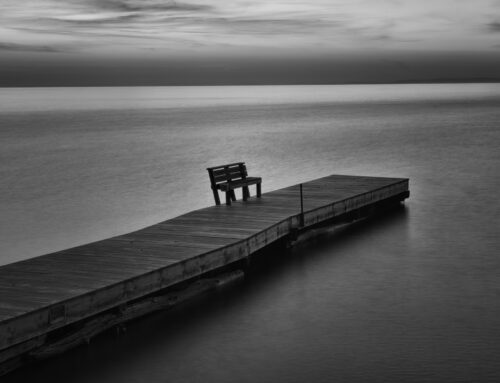


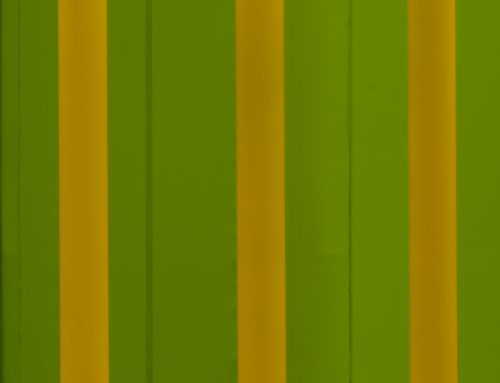
Hey, Jack
Nice to see you are back. Love your Hunts Mesa Sunrise photo, the cool color in the foreground contrasts nicely with the warm color background.
David
How was GAPW’s swan song? I attended many great workshops with them, and “The Pilgrim” is a fine man.